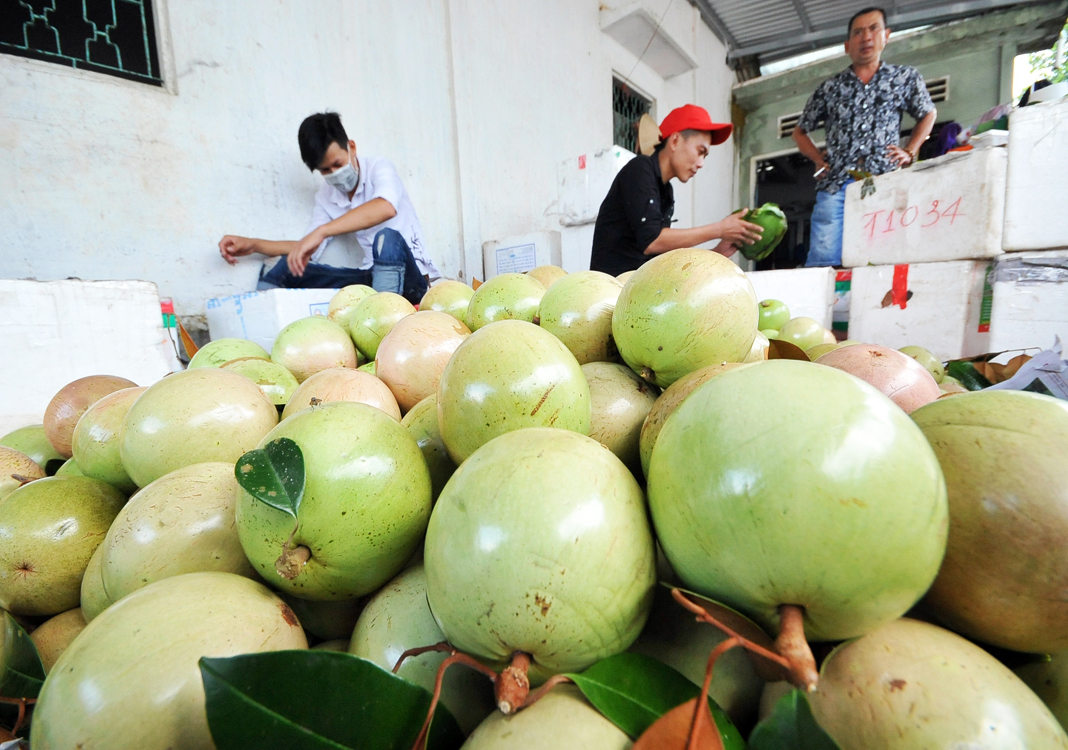The Ministry of Agriculture and Rural Development is encouraging farmers to make all-out efforts to develop production, “especially raw and processed food, without fear for surplus or sale slump as the international situation is experiencing complex developments.” However, would the authorities consume their products if the market does not move favorably as forecast?
Some targets that the ministry expects to achieve this year are 43.5 million tons of paddy, 8.5 million tons of seafood, 5.8 million tons of meat, over 14.6 billion eggs and 1.2 million tons of milk. Paddy is seen as to have a “wide door” for export, but that door is not always be opened.
Prices of commodities, not only in Vietnam and regarding farm produce alone but also worldwide, are now a gloomy picture.
Statistics of the World Bank indicate that the global energy price in the first seven months of this year plunged up to 35.9% from the year-earlier period, the metal price also fell 9.2% year-on-year, while the price of farm produce inched up only 0.7%. Among farm produce, it’s worth noting that while prices of raw and processed food increased 2.2% (prices of cereals alone rose 1.1%), prices of agro-materials fell 5%. These figures show that not all agro-products enjoy favorable exports.
A deeper analysis reveals that the price gain of the above agro-products is “fading” over the time.
These statistics also show that the price index of agro-products by July had declined 4.9% from the beginning of the year. In specifics, prices of food and foodstuffs fell 5.8%, cereals 6.6% and agro-materials 3.3%. In the current global situation, it’s unlikely that “the wind will reverse course” in the short term.
Under such a circumstance, despite enormous efforts, Vietnam’s agro-product exports are affected strongly by the fluctuations of global market prices. The total revenue from exports of key agro-products in the first seven months reached US$20.93 billion, but it was still US$379 million lower than the figure in the same period last year, equivalent to a 1.8% year-on-year drop.
The reason for the drop is first and mainly the fluctuations of the global market prices. A calculation from statistics show that despite a gain of US$212 million in prices from exporting 3.92 million tons of rice in the first seven months, or a 12.3% year-on-year increase, Vietnam incurred a net loss of US$257 million in prices, or a 3.4% year-on-year drop, though the total volume of agro-product exports rose a slight 0.6% because of the fall of prices of other agro-products.
The statistics also indicate that rice is probably the only highlight in Vietnam’s agro-products exports in the first seven months, while exports of other agro-products are facing difficulties.
Still, rice exports have shown clear signs of decline. The export volume in May reached a record high of 954,000 tons with a top price of US$516 per ton, but exports in the recent two months plunged to only 400,000-450,000 tons with continuously falling prices.
Reverse course unlikely in short term
In this context, though some favorable factors have emerged, it’s unlikely that agro-products will not face surplus or sale slump as remarked by economic managers.
The effect of the EU-Vietnam Free Trade Agreement (EVFTA) from August this year is good news, but it may need time for adaptation to boost exports to the EU market.
According to statistics, the revenue from exports of key agro-products to the EU in the first half of this year reached US$2.19 billion, accounting for 12.4% of the total revenue from agro-product exports in the period and placing the EU as the third largest export market of Vietnam after the United States and China. The EU is also among Vietnam’s largest markets for exports of some commodities, such as coffee with a share of 41%, rattan, bamboo and sedge products with 29.9% and cashew nuts 25.8%, and the third largest market for seafood with a share of 14.1%. However, its shares for other exports are small, such as timber and woodwork with 6.7% and vegetables and fruit with 4.3%.

Consequently, it’s probably hard to hope that exports to this market will surge immediately when the EU is promoting the from-farm-to-table policy, with new requirements for product quality, and is getting stricter on product origin and environmental protection.
For China, the country is struggling hard with torrential rains over the past two months plus and the storm season has just begun, which has certainly inflicted huge damage for her agriculture. Therefore, it’s highly likely that China has to increase agro-product imports to offset the damage. However, exports to this market will not be easy, as the Covid-19 pandemic development is still complex and China will continue to tighten control of product quality.
In sum, in the current gloomy global market, the surplus and sale slump are highly possible though new factors to stimulate development have emerged; so, it’s a suitable option to refer to market signals to boost production. The lesson of encouraging farmers to boost livestock farming to fill the market vacuum due to the African swine fever which caused a nosedive in chicken prices and heavy losses for farmers probably remain fresh.
By Nguyen Dinh Bich









